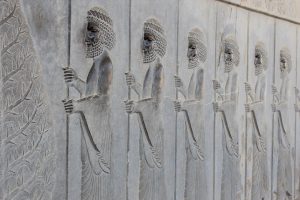Jewish Holidays with Sof Ma’arav
Sof Does Purim!
February 28, 2021
Images by Arnie Warshawsky
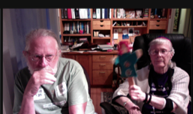 On Thursday, February 25th, Congregation Sof Ma’arav celebrated Zoom Purim. It was a joyous occasion, filled with songs, noise, and a raucous reading of the Megillah. It was a grand event, in the tradition of ‘The Party Shul.’ A fun time was had by all.
On Thursday, February 25th, Congregation Sof Ma’arav celebrated Zoom Purim. It was a joyous occasion, filled with songs, noise, and a raucous reading of the Megillah. It was a grand event, in the tradition of ‘The Party Shul.’ A fun time was had by all.
The evening began with Arnie Warshawsky showing pictures of the last live gathering of Sofers, the 2020 party at Robert and Bernice’s Littman’s temporary home.
Arnie also sent us some pictures of this year’s Zoom Purim. HaShem willing, a safe Covid-free Purim will be celebrated by all, in person, in 2022!
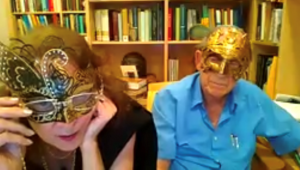

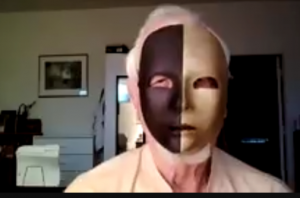
Sof Hanukkah 2020
A Small Hanukkah Miracle
By Mathew Sgan

Last year I had an almost full package of Hanukkah candles left over. I planned to use them for this year’s lighting ceremonies. Alas, on the fifth day, I started to worry that I would be short of candles. I anticipated my needs. Five on the fifth day; six on the sixth day; seven on the seventh day; and eight on the eighth day. A total of 26 candles. I counted the candles. Only 25. I re-counted. Only 25. I counted the Jewish way: not one; not two. Not 26 is missing. I counted on successive nights. Still one short. What to do! Buying new candles. The Temple gift shop is closed. Searching desparately for candles is a fool’s errand. Call friends? Too much fuss during Covid-19. Too late for an online order and delivery. So I started to reconfigure 7 candles in eight spots. Leave # 1 vacant! Leave # 8 vacant! Leave an interior spot vacant! Nothing seemed right. I was perplexed. What would the sages do? Should I call Dina, Jay, or Gregg? Again recounts. Again one short!
The eighth night arrived. I went to the package. There they were! Eight multicolored candles (okay, mostly white.) So that’s my story. For me, it’s my own personal Hanukkah miracle!
Hanukkah Memories
Or Why December Was My Boys’ Favorite Month

By Kay Lorraine
Most of you know that I was not born a Jew, but converted as a young person. I tried to compete with the Christmas-theme that was exposed to my children everywhere outside the house by going waaaaay overboard on Hanukkah decorations at home. I didn’t want them to feel left out, so there was blue tinsel and white twinkle lights in every room. Fold-out dreidels and glittery “Happy Hanukkah” banners hung from the upstairs balcony. I held Hanukkah parties for my son’s classmates from Torah Academy, and went sort of over-the-top on gifts each night when we lit the menorah. I never claimed it was tasteful – I was making a statement to my kids. Then, when they visited my parents (the Methodists) there was always a big trimmed tree, and my father’s “thing” was too many outdoor Christmas light festooning the house. Once again – not particularly tasteful. My two boys just LOVED December because it meant they got to celebrate two holidays and clean up on lots of gifts from both sides. My sons inherited many fine traits from both sides of their families but, obviously, “impeccable taste” was not one of them.
Hanukkah’s 5th Candle at Les and Pat’s
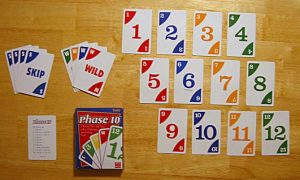
By Les Rosenthal
Risa, Linda, Pat and I started our small and health conscious dinner party with a quick beach walk. You may know Linda’s canine sidekick, Cooper? Let’s say, Risa and they were happy for a stretching of the legs, and Cooper for meeting other un-cooped up dogs on Kailua Beach. After eight years of living 240 steps away, I’ve concluded ‘Kailua’ is Hawaiian for ‘Happy Dog,’ because the beach has many. Then back we went to our Kalaheo Beach House for our sunset Chanukah candle lighting.  We five enjoyed a twilight dinner of Linda’s salad, our vegetables and roast lamb chops outside in our garden on the back deck. Then we moved into the house for a card game called Phase 10. If you haven’t played it yet, you might give it a look. It’s very easy to learn, very sociable and fun to play. If you’re interested give me a call. Pat and I love small group friend gatherings. While playing cards we ate too many of Risa‘s provided Sufganiyot! Look that up if you don’t know what it is?We had a great time!
We five enjoyed a twilight dinner of Linda’s salad, our vegetables and roast lamb chops outside in our garden on the back deck. Then we moved into the house for a card game called Phase 10. If you haven’t played it yet, you might give it a look. It’s very easy to learn, very sociable and fun to play. If you’re interested give me a call. Pat and I love small group friend gatherings. While playing cards we ate too many of Risa‘s provided Sufganiyot! Look that up if you don’t know what it is?We had a great time!
COVID Hanukkah
By Robert Littman
Here is our COVID cautious Hanukkah. One daughter Tish with her family at one end.
Other daughter Emma at the other and Bernice in the middle.
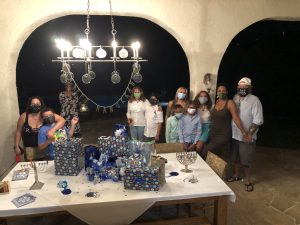
IllumiNation
January 13, 2021
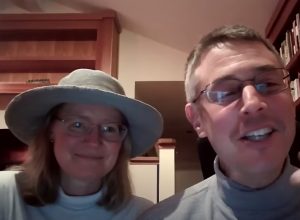

On Thursday, December 17th, IllumiNation, a one-hour program spearheaded by Rabbi David Booth of Congregation Kol Emet in Palo Alto celebrated the 8th night of Chanukah in a nationwide, virtual celebration. Rabbi Booth is the nephew of Avi Soifer and Marlene Booth. Leaders and congregants from all 50 states and 2 provinces in Canada joined together at once. More than 1,300 people, including many Sof Members, attended. The event included a concert by internationally acclaimed singer/songwriter Neshama Carlebach. This was a night of Jewish solidarity that will not soon be forgotten. Link below: https://www.youtube.com/watch?v=DZkzkhrDTLc&feature=youtu.be
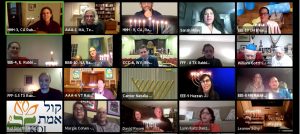
From Rabbi Rosalind Glazer
June 16, 2020
A Letter to Sof Ma’arav
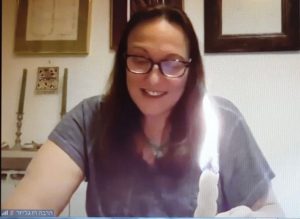
I’ve thought of you often while sheltering in place and I dearly hope you have been well. From my home in Jerusalem, I marvel at the inextricable bond between our hearts across 13 time zones and thousands of miles. I am inspired by your shul’s founders in choosing the phrase coined by the liturgical poet Yehuda HaLevy “Sof Ma’arav –The Edge of the West” as your name, and I admire the community you’ve built and continue to nurture in these challenging times. You’ve creatively adapted to hosting and attending services and gatherings online and I only regret that the time difference has made it difficult to join you.
Since late January, and then as the circumstances of our lives shifted into stay-at-home mode, I’ve been in contact with Robert Littman and Sandra Armstrong to confirm our intentions to be together again for yet a fourth High Holiday season! I am delighted and very much looking forward to bringing in 5781 with you, whether from the bimah at our Unitarian Universalist site on the Pali or via Zoom from across the world.
Now remaining closer in touch with family, friends and colleagues via the internet than ever before, it strikes me how the pandemic has made us so much more conscious of our global oneness. We all share the enormous impact that Covid-19 has had on our lives, a deep concern for each other’s safety and well-being, gratitude for our healthcare and essential workers, and a mutual yearning to extinguish this virus and find a vaccine as soon as possible. If it wasn’t evidently clear before, we’ve learned that not only do babies fail to thrive without human contact, but we adults have the same basic human need. Being together is so essential to our fundamental sense that “all will be well” that we have quickly harnessed both our creativity and ingenuity to plan gatherings that will sustain us until we can meet again for shared adventures, harmonious singing, praying in unison and those oh-so-festive and delicious potluck meals!

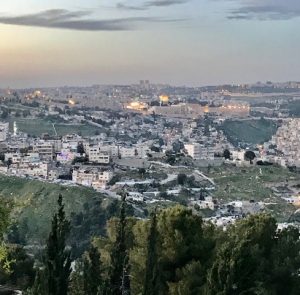
While we are glued to the news as an essential source of information (and also challenged by the reliability of these sources) there is nothing like a story from a trusted friend to get a glimmer of what life is like “out there.” And while I can only share my own experience of life in Jerusalem during the pandemic rather than report on the whole of Israel, I hope you will enjoy reading a bit about my own perspective “on the ground.” About 10 weeks ago, Kehilat Zion began presenting daily and weekly online programs.
Beginning at 8 am, my friend and colleague Rabbah Tamar Elad Appelbaum has offered a morning message via WhatsApp, focusing on uplifting messages in the psalms or expounding on the spiritual lessons of the Omer count. A 10-10:30 am session has followed with a body-mind offering from rotating leaders from our knowledgeable members in the healing professions. A mid-day lunch and learn has been presented in conjunction with collaborators, teachers and scholars from around the country. At 4 pm 30 minutes of storytelling has been offered by our student rabbi and an evening gathering at 8:30 pm has concluded the day, frequently presented in partnership with organizations with whom we have partnered in the past or who share our vision of a Jerusalem for all its citizens. A weekly poetic and musical Kabbalat Shabbat is hosted in partnership by us, with Rabbi Benny Lau and the Israeli Jewish Outreach Organization, “929.” On one very inspiring evening as many as 800 folks tuned in to our pre-Shabbat gathering that always ends early enough to accommodate those who observe an Orthodox halachic Shabbat.
During these weeks and months, together we’ve marked and celebrated Yom HaShoah, Yom ha Zikaron, Yom HaAtzmeut and Yom Yerushalayim and supported our Christian and Muslim friends in their observances of Easter and Ramadan, just as in “normal” times they’ve joined us for erev Shabbat services. While we Jerusalemites are normally accustomed to encountering the “other” in public spaces, during the shutdown Kehilat Zion has intentionally prioritized our commitment to continue building of bridges over our invisible lines of separation by creating online meetings in our homes and neighborhoods. One organization that does this best is called “0202.” The digits 02 represent Jerusalem’s area code and the number doubled betrays the reality that Jerusalem and its population is still largely divided into East and West. Joined back to back it also symbolically points to the ways in which we are one city and the commitment by its founders to work to break down barriers that separate us. Because suspicion and xenophobia grow their ugliness in the dark, intentional meetings and conversations can help bring familiarity, hope, light and even friendship between the two Jerusalems.
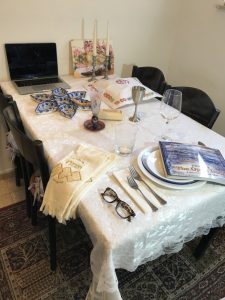
This year, for our annual Ma’aminim gathering – when Kehilat Zion normally joins with community partners at Jerusalem’s First Station to share music, stories and information about our shared initiatives and projects – we presented an online interfaith and multimedia event in partnership with the Jerusalem Sacred Music Festival known as Mekudeshet. The outcome of this year’s efforts was a remarkable event that was beautiful, thought provoking and profoundly moving. At one point Rabbah Tamar who had traveled to visit Sufi Sheikh Ihab Balha at his home in Jaffa, gifted him with a shofar, a symbol of the outcry of the broken heart. Sheikh Ihab, whom I have met and spoken to on several occasions, told Tamar that it was the most beautiful gift he had ever received! Afterward, Ihab is shown in Jerusalem visiting with another dear friend of of Kehilat Zion, Fr. Alberto Pari, at the Hebrew Speaking Catholic Church in downtown Jerusalem, each of these young men clad in their traditional religious garb. Sheikh Ihab listened with a full heart and empathetic ear to the tearful and heart wrenching stories about the carnage the virus has wrought on Fr. Pari’s home community in Italy. Afterward, to lighten things up a bit, they played a rousing and fun game of ping pong in the Church’s rec room.
Today in Israel, new diagnoses are slowing to a stop. The number of recoveries are rising and national casualties remain under 300. While every life lost is precious to God and to grieving families and communities, it is good to note that with fewer elders living in shared residences, Israel has suffered fewer deaths per capita in our elder population than in many other countries including the United States.
As we moved from total lockdown to an easing of restrictions – first from the allowable 100 meters to stray from our homes, to 500 meters of distance permitted for exercise, to temperature checks when entering stores, to queues standing 2 meters apart and limited shoppers inside, to the requirement to wear masks (eased during the recent 100+ Fahrenheit heat wave), the rules have been constantly changing and downright confusing. Waiting in line outside for 90 minutes for pre-Pesach food shopping, we also saw an almost complete standstill of traffic. Now more vehicles are appearing on the roads and
with them more car exhaust for those who are out walking in the newly found fresh air.
These times continue to challenge us all and the greatest impact has been borne by the least advantaged populations. For those who travel exclusively on public transit, like me, the choice to go anywhere means risking infection. Shops and restaurants in my once bustling neighborhood of Jerusalem’s German Colony have begun closing permanently due to lack of sufficient patronage. And since so much of our economy depends on tourism and travel (including my own practice officiating at lifecycle events) the drop of income has been staggering. Our need for creativity, sharing insights, friendship, laughter, spiritual and emotional uplift and occasions to celebrate has become particularly clear at this time. While looking ahead toward better times, we are taking joy in small things.
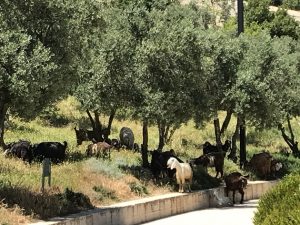
One thing that has been particular uplifting for me during shutdown is having taught myself how to make the tasty probiotic elixir, Kombucha. It began with a friend who delivered the starter liquid, literally hours before orders were given to stay at home. As the virus wafted through the air and more and more folks were infected, the delicious probiotic drink – a symbiotic culture of bacteria and yeast – was growing in my own home. As I mastered the technique, I was invited by Kehilat Zion to teach a 3-part class at 10 am for three Tuesdays running. And now a group of friends and neighbors have become Jerusalem’s first ever Kombucha Makers Community (JKMC). For Yom HaAtzmeut, 3 Israeli Reconstructionist rabbis, including me were recruited to a Zoom conversation that was recorded and viewable on FaceBook. And I also recorded a mini-video for the celebration of Israel’s 72nd birthday. Most recently I presented songs and prayers with Yahala Lachmish, Kehilat Zion’s co-musical director, at KOLEYNU, the first ever online Jewish wisdom and music festival, also recorded live on Facebook.
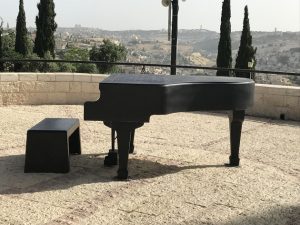
One by one as we’ve slowly begun to emerge from our homes, I’ve welcomed visits from each of my two sisters, attended a socially distanced Shabbat dinner with two friends, ordered and ate my first take-out falafel sandwich and planned a Shavuot trip to the Kibbutz where I lived after making Aliyah eight years ago. Each time I head out I feel the world is at once exciting, scary, new and tenuous. Living fully with whatever life presents requires us to banish the illusion that we humans are (or ever were) in charge. Like the unetaneh tokef we chant at musaf on the High Holidays, let’s pray that the bitter decrees will be made sweet through our teshuvah, prayers and righteousness, that moments of pain and harshness will be softened by our generosity, kindness and compassion and that we can learn to fully appreciate and accept the gifts of this life with humility and gratitude.
I warmly invite you to enjoy melodies I recorded on my SoundCloud for last year’s High Holidays but which unfortunately weren’t distributed in time. ENJOY! https://soundcloud.com/user-578874745/sets/elul-and-high-holiday-melodies
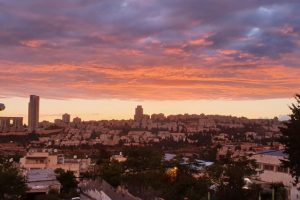
5780 Passover Seders: Tradition and Technology
May 13, 2020
By Mathew Sgan
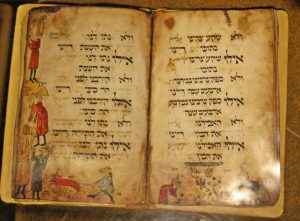
Isolation during Passover was on my mind. Then the heavens opened up and it was Dayenu all over again. First, Dina gave me the directions to tune in to her seder (Hawaii time 7:00 PM.) To celebrate with Dina and David is something special. Dayenu. Then, my daughter called from Boston with the news that cousin Kenny from Chicago was doing a zoom seder for the family at 2:00 PM Hawaii time. Texas, Tennessee, Ohio, Illinois, Hawaii, and Massachusetts would be represented. And later a friend from Serbia was added. Dayenu. My nephew, Ken, is a creative lawyer. He was able to conduct a Zoom Seder which combined songs, stories, parts well distributed, and the highlights of a Passover seder to the delight of about 35 people and four generations. No one of any age tuned out. Dayenu.
In addition, through his skillful use of technology, Ken brought up the video and audio of past family seders. There was my Uncle Hy (z”l) doing the four questions in Yiddish. There was my sister Janet (z”l), brother in law Sidney (z”l) and wife Gin (z”l) singing and reading. There were our family children getting ready to ask the four questions. Dayenu. Instead of a DIY seder in isolation, I was blessed with a little bit of heaven. Two wonderful seder experiences in one day. Dayenu for a lifetime!
Some Pesach Humor
May 11, 2020
A British Jew is waiting in line to be knighted by the Queen. He is to kneel in front of her and recite a sentence in Latin when she taps him on the shoulders with her sword. However, when his turn comes, he panics in the excitement of the moment and forgets the Latin. Then, thinking fast, he recites the only other sentence he knows in a foreign language, which he remembers from the Passover Seder: “Ma nishtana ha layla ha zeh mi kol ha laylot.” Puzzled, Her Majesty turns to her advisor and whispers, “Why is this knight different from all other knights?”

Seder Photos
May 6, 2020
Photos from the Warshawsky Zoom Seder
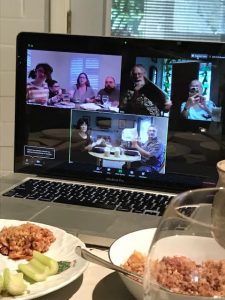
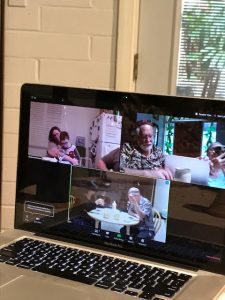
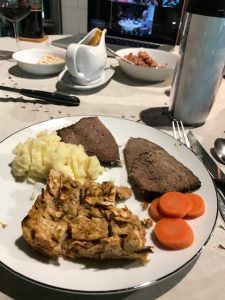
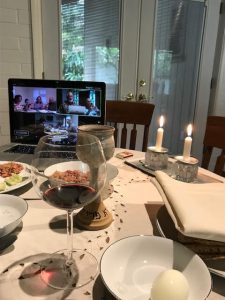
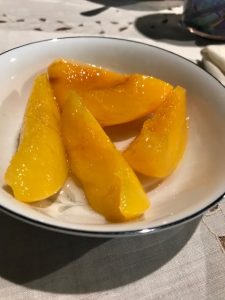
Purim Party
A Lasting Memory
April 20, 2020
On Monday March 9, about 100 people gathered at Robert and Bernice Littman’s home for the Sof Purim Party. There was fun and food for all. Multiple people read from the Megillah, most notably Dina Yoshimi, the woman of 1,000 voices.
As we all face lockdown from the Covid-19 Virus, the warm memory of this Purim Party will resonate with each of as we think of pour friends and Shul family during this time of isolation. Here are some pictures to help us remember.
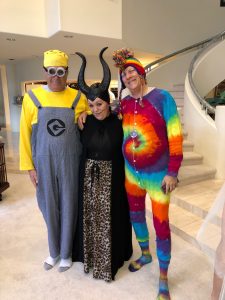
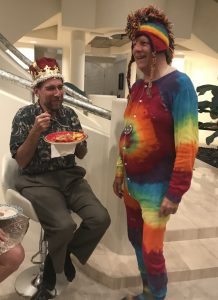
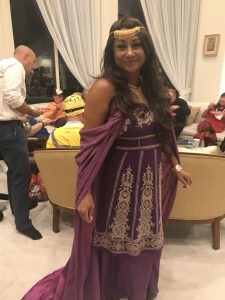
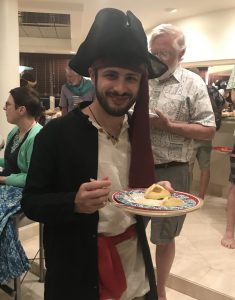
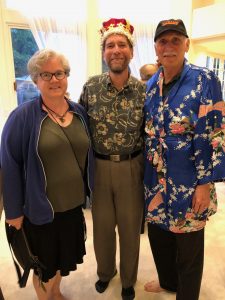

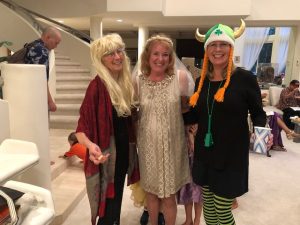
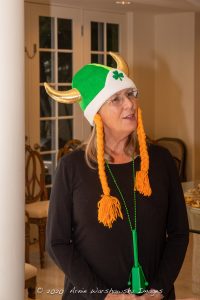
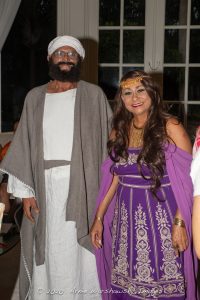

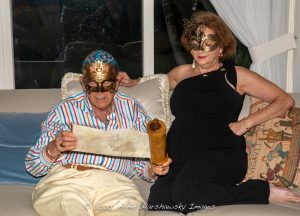
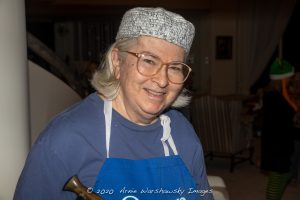
T”U B’Shevat Seder at Sof: Learning as We Go
By Dina Yoshimi


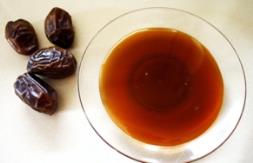

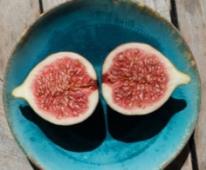

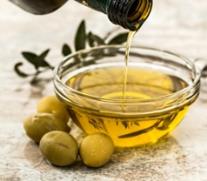
Each year shortly after we enter the month of Shevat, the e-call for contributions to the T”U B’Shevat seder goes out. It’s the annual sign-up ritual when Sofers send in their top 3 choices for a contribution to the seder, and then receive a response directing them which item to bring, and how much. On the day of the seder, there’s the annual chair-moving ceremony, as we ask seder attendees to carry enough seats in from the sanctuary so that everyone has a seat at the seder tables, now bedecked with local greenery and laden with plates full of fruits, nuts, barley, and large bottles of red and white grape juice. And then there’s the seder text itself, printed out on approximately 30 strips of paper that we re-use each year, and read consecutively by seder participants, some of whom now have a favorite reading. Along with the seder text is the now-familiar structure of the seder, with its four distinct cups of white/dark grape juice representing the changing seasons, and the many wonderful types of fruits, nuts, and herbs representing the four worlds of Assiyah, Yetzirah, Beriah, and Atzilut. The seder is a product of the very best of Sof: our capacity to come together as a kehillah, with each Sofer making a contribution that creates a joyful, Jewish gathering. Yet, something is missing, and, no, it’s not the lox and bagels.
Ah, you guessed it! YES, it’s learning! If there’s one thing we come to Sof for, it’s Jewish learning. Learning Hebrew, learning Talmud, learning Torah cantillation, learning to lead a service, learning when we share our perspectives at Torah study, or our opinions at a book group discussion – learning, and perhaps a good argument now and then, are the key ingredients to seasoning our Jewish endeavors. So, nu? Why should the T”U B’Shevat seder be any different?
In this spirit of learning that enriches our lives, here are two treasured teachings, shared with me by Sofers, that enriched my learning in conjunction with this year’s seder.
1. For years, I have listed oranges (and other citrus) as a fruit that is associated with the world of Asiyah, represented by fruits that are inedible outside and edible inside. This listing is not uncommon in published T”U B’Shevat Haggadot (see, for example, http://hazon.org/wp-content/uploads/2011/06/Haggadah.pdf). I was much surprised and delighted to learn from R. Daniel Lev that Chabad follows quite a different tradition. Here’s his share:
“Rabbi Chaim Vital (the main disciple of the Ari) explained that there are 30 fruits which parallel the ten sefirot as they are manifest in each of the three lower [of the four] spiritual worlds Beriah, Yetzirah and Asiyah.
• Beriah is far removed from the realm of impurity, and is represented by those fruits which are wholly edible: fruits with soft cores (such as apples and pears) and with cookable skins (like lemons and oranges) are considered totally edible, even if those parts are undesirable.”
2. The other teaching comes from Alice Flitter, who, in response to a comment I had made about how we had included grapes on the table in the early years of the seder, but then stopped doing so since they are “fruit of the vine,” shared that grapes are indeed quite appropriate as they are one of the seven species of fruits from the Land of Israel, all of which have a rightful place on the T”U B’Shevat seder table. (Here’s the list from Deuteronomy 8:8: wheat, barley, grape, fig, pomegranates, olive (oil), and date (honey).)
So Sofers, hold onto your fruit-laden Carmen Miranda hats, because next year, we’ll have oranges on the same plate as apples, and grapes as a joyful addition to the bounty that we appreciate and savor during our T”U B’Shevat seder!
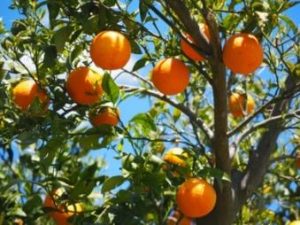
Sof Hanukkah Party 2019
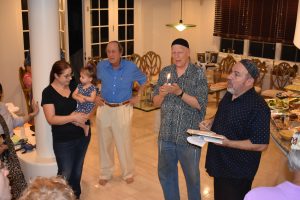
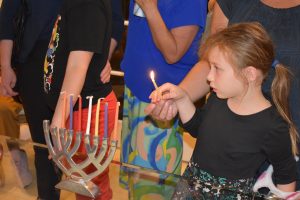
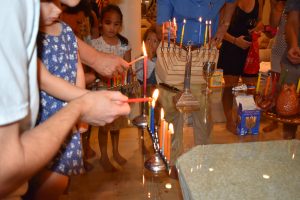
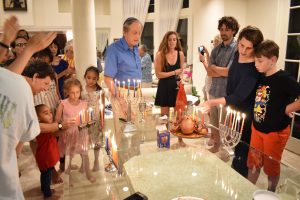
On Saturday, December 28, Sof held its annual Hanukkah Party. The soiree was held at the Littmans’ spacious temporary home. The Rockin’ Ruah band, led by Rabbi Ken Aronowitz, with side men Morris Rabinko, Reb Daniel Lev and Don Armstrong serenaded the happy crowd. Scores of menorahs were lit, and mass quantities of latkes were consumed. Dancing, singing, and schmoozing abounded. The “Party Shul” upheld its reputation.
Hanukkah Humor
Jan 8, 2020
A Jewish Zebra
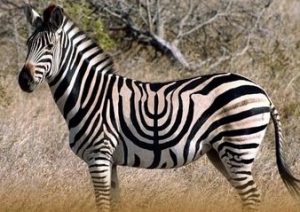
On the Seventh Night of Hanukkah
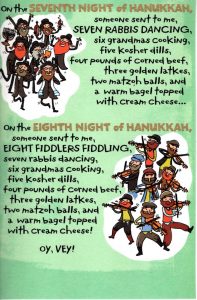
High Holy Days: Sof Maʻarav Photo Montage
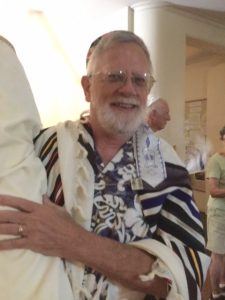
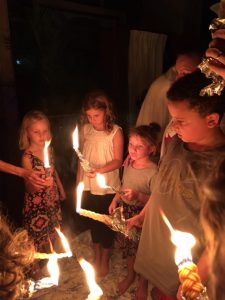
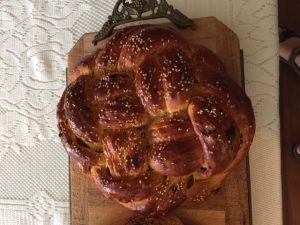
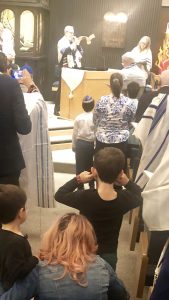
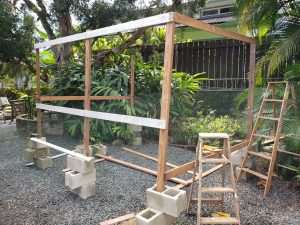
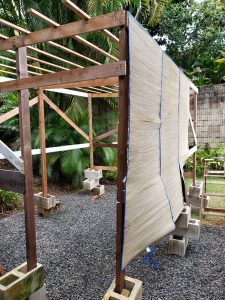


High Holy Days Thoughts
By Sandra Z. Armstrong
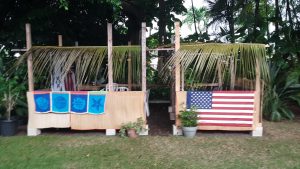
Chag Sameach,
We had an outstanding evening with 40+ attendees for the Sukkah Party. We celebrated Bella’s 8th birthday with cupcakes! The rain has come in this morning, but the entire week of Sukkot has been spectacular with sunny days and moon lit nights.
These Holidays at Sof Ma’arav have been one of great beauty and joy. Todah Rabah to all of you who celebrated and participated. The Holy Day season in Hawaii from a Jewish point of view just doesn’t get better than this! A string of special moments of our joyful accomplishments will carry us through the rest of the year.
Holy Days & Sukkot Edition
Drash for Rosh Hashanah 5780 By Alex Golub
Photos by Arnie Warshawsky
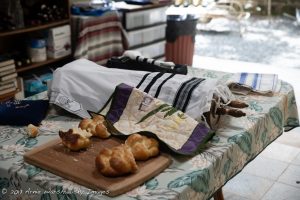
Rosh Hashanah is the holiday of new beginnings, and nothing says ‘new beginnings’ like children. This year – which means every year – we have three of them. Today we have just heard the story of Ishmael and his mother Hagar, and the story of Samuel and his mother Hannah. Tomorrow we will read the Akedah, the story of Isaac and his father Abraham. These stories remind us of how central the relationship between parents and children are in Judaism.
Children are our future generations. They are what keep our community going and keep our heritage moving forward. But even though Rosh Hashanah is a joyous occasion, the stories we read during this holiday are dramatic and intense. They remind us not only of the joy of parenting, but its challenges. They remind us of the pain that children can brings us: We learn from Hagar the agony that every parent feels when a child needs more help than the parent can give. Abraham shows us the dilemma that parents face when they must do the right thing, even at the expense of a child’s well-being. And finally, Hannah reveals the despair of childless-ness. These stories teach us that children are not only sources of joy, but also sources of profound worry and anxiety.
Most of us, thank goodness, will never have to go through the trials of a Hagar or Abraham. And many of us here have decided not to have children, which is not only a legitimate choice but probably a smart one, especially if you’d like to travel more and get a lot of sleep. Why do we read these terrible stories on Rosh Hashanah? Perhaps because they tug so hard on our heart strings… and thus help keep us awake during our long services! But they also have something else in common: These stories teach us that g-d provides for us even when we cannot. G-d opens Hannah’s womb, stays Abraham’s hand, and rescues Hagar’s son.
Now at first glance, it looks like these stories teach Jews about hope. And yet, I would say that hope is not a Jewish virtue. Hope is, famously, a Christian virtue. It is placing your trust in god and relying on him to fix things when you cannot. That would be a nice option but it is not what we see in these stories today. The haftorah tells us that g-d is the person who shut Hannah’s womb in the first place, not someone who she is supposed to just sit back and wait for him to reopen it. The Shalom Hartman institute has an extremely detailed curriculum on the relationship between Sarah, Abraham, and Hagar and they point out that Abraham never doubts that g-d has the power to ensure that Abraham has children. What Abraham doubts is whether or not g-d will keep his promise.
For Jews g-d is someone you can bargain with, as Abraham does in the Sodom and Gomorrah story. G-d is someone who can be legally out-maneuvered, as Rabbi Joshua does in the famous Talmudic tale of the oven of Aknai. G-d is someone whom you can shake your fist at and scream “he had a hat!” as the mother does in the famous Jewish joke. Our Jewish conception of g-d is much less influenced by Plato and other Greek thinkers than the Christian versions of g-d. For them, g-d is perfect and unchanging. This creates a philosophical problem for them: If g-d is all powerful and perfect why does bad stuff happen? This is less a problem for Jews because we know the world is an uncertain place where bad and random stuff happens all the time. We believe g-d is the sort of being who decides it is too busy to read our emails. As a result of this, the Jewish parents in our stories do not wait, hoping that g-d will somehow save them. Sarah does not hope that g-d will somehow put the fix in on Ishmael. She doesn’t even believe that g-d will allow her to conceive — when she does, she laughs in disbelief. And, tragically, when Hagar has done everything she can for her child she does not pray to g-d or hope for rescue. She just cries.
So I don’t think our Jewish parents hope. I think our Jewish parents strive. They do every-thing they can to achieve their goal. Even, in Abraham’s case, to the point of doing something terrible. They keep going even when the situation seems hopeless. Their struggles remind me of a quote from Shimon Peres’s autobiography, which I think I’ve mentioned in a Drash before. The autobiography is not a great book unless you want to read the nicest things ever said about Shi-mon Peres. But it has a wonderful quote from his mentor, David Ben-Gurion: “In Israel, to be a realist, you must believe in miracles”. Ben-Gurion, like Hannah, was a striver. He didn’t sit back and hope that g-d would hand him a Jewish state. The creation of Israel required three or four incredibly unlikely things to happen. To make them happen, founders like Ben-Gurion and others had to make extraordinary things happen. In order to do that they had to be ruthlessly honest with themselves about their chances, and concoct the most likely plan to succeed, even if that plan had a very, very, very small chance of succeeding. And then, they went for broke.
In his wonderful short biography of Hillel, Telushkin points out that optimism is a Jewish virtue, along with patience, moral imagination, a nonjudgmental nature, and intense curiosity. I wouldn’t call the striving that we see in our readings ‘hope’. I’d call it optimism. This is not sitting on your hands and letting someone else solve the problem for you. It is getting out there and doing something. And I think the Torah is very realistic in showing just how hard, dark, and messy this striving can be. To return to our Israel example, the Irgun did not just sit there and wait for g-d in 1946. They did it themselves. I think we will need optimism more than ever in 5780. We were just a month or so into 5779 before 11 people were killed at the Tree of Life Synagogue in Pittsburgh. It was the deadliest attack on Jews in the history of our country. Afterwards, our community held a memorial service at Temple Emanu-El. There, my two boys joined all the other children in lighting a memorial candle for the victims. What are you supposed to tell your children when that happens? That, given all the other places we’ve lived in our history, ten is actually a pretty low number?
5780 does not exactly look like it will be a return to normalcy. Here in the islands, the county will install new “portable [lifeguard] towers [at our beaches], which can easily be moved back as the ocean encroaches” due to climate change, which is probably the most pressing challenge our islands and the world faces — and one both we and our children will have to live with. Of course, compared to the challenges of the 20th century — two world wars, an influenza pandemic, a possible nuclear holocaust and a real Jewish one — portable lifeguard towers are not that big a deal. And regardless of how big the challenges we face are in objective terms, we should not be demoralized by them. The Torah teaches us today that resignation will get you just as far as hope: nowhere. Instead, it offers us Jewish parents, striving and optimistic. They are the rule, not the exception, of Jewish history. Many of us have parents and grandparents who were strivers as well — men and women who grabbed fortune by the hand and pried prosperity out of its grip one finger at a time.
I think the Torah encourages us to keep moving forward with optimism, to be a realist and to believe in miracles. You can never tell when a well might erupt in the middle of the desert. So if you have been feeling depressed by the news, by the heat, by the ugliness of life in general, just look at it this way: Abraham thought he was going to have to kill his kid, but then that just got downgraded to just having to circumcise him. Ladies and gentlemen: Judaism! Let us remember that we have it in our power to make this year a good year and a sweet year. The book of life is open. It’s up to us to decide what gets written in it. Let’s keep striving. Shanah tovah!
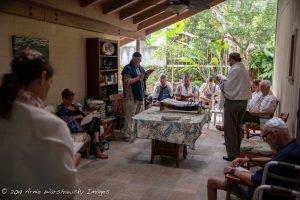
A Snowbird’s Rosh HaShanah or Norman Rockwell Made it Look Easy
by Les Rosenthal
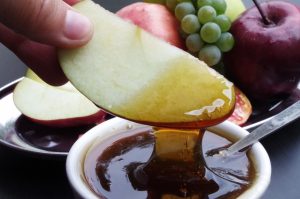
If we lived in Eutopia, preparing for the High Holidays with my wife, Pat, and our adult children, Katie and Kerri, when both adult daughters live within driving distance would be easy and enjoyable. Not so much in Gig Harbor, Washington, where my desire to enjoy this family time of year is an uphill battle. Kerri said, “Dad, I’ve got to work.” Her excuse to skip services, which I used when I was her age, now comes home to roost. Listening, I recall the admonition of the Torah to not condemn in my children faults I have condoned in myself. So I keep my mouth shut and imagine I’ve planted a seed for another time. Maybe, I think, I can arrange a family dinner. Maybe Kerri and Dan, our son-in-law, will come with our granddaughter. After all, my daughters live a lot more hectic life than I do. Their many obligations, commuting time, and finishing their ‘to do’ list are in themselves a major accomplishment. Maybe I’ll suggest their house, so they don’t have to fight the traffic to come to our house. Maybe, because food will bring our family together once more, for our Rosh Hashanah gathering. Maybe without gifts, today Pesach is all we can do. Maybe I can offer to bring Chinese food, which will allow us to gather at Kerri and Dan’s home, no fuss with cooking or much cleaning up. I’d much prefer that than missing High Holidays gathering altogether because the energy to make this happen seems like too much. I’ll ask my eldest daughter, Katie.
Calling Katie, I am pleasantly surprised when she says she’d like to go to Rosh Hashanah services with my wife, Pat and me. ☺ Pat and I are invited to a friend’s house for an after-service open house that afternoon. According to Katie, that is too much “being around my parents’ friends” to endure. I get that. Ok, I think… maybe just a family dinner after Kerri and Dan get off work. This will still allow an acknowledgement of the New Year with a gathering of the Rosenthal tribe. I call Kerri back, suggest it and she says, “It’s too far away for us to be able to plan.” SIGH… With the simplicity of my plan, it may still work even if we plan it a few days beforehand. Maybe Katie, Pat and I will just enjoy our company at the after-service oneg and call it a day.
We Jews living in the United States have so much for which to be grateful. Outside of Israel, we live in the least anti-Semitic country in the world. I’ve been inspired by listening to Dennis Prager these past few months. If you haven’t, you may want to look him up? He taught me that “Happiness is a decision not an emotion.” Struggling with my familial Rosh Hashanah hopes, I have to credit Dennis Prager for helping me keep it all in perspective.
Respectfully submitted from Snowbirdland – Les Rosenthal
Studying on Shavuot: From the feet of a man to the foot of a mountain
By Dina Yoshimi
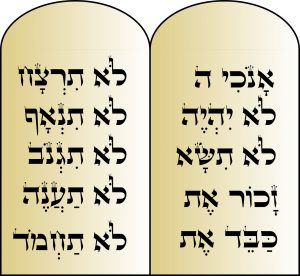
Growing up in a Reform shul, I associated Shavuot with two rites of passage: consecration and confirmation. On Erev Shavuot, the rabbi would call all the children who were set to begin their Jewish studies in the Fall to the bima to be consecrated. The highlight for all those cute little ones scrambling up the stairs to join the rabbi was receiving their Ten Commandments pin. I still have mine tucked away. On the morning of Shavuot, it was time for the older kids to shine. The 10th grade confirmation class was filled with 16-year-olds ready to challenge everything they’d ever been told about God and Jewish tradition. They led the service, sharing their questions, and sometimes their answers, with the congregation. They had committed to continuing Jewish studies beyond the bar or bat mitzvah, and developed the maturity to bring their own Jewish perspectives to their lives. The highlight for that cohort of questing and questioning youngsters was the individualized blessing the rabbi bestowed on each student, and the gift of a beautiful Tanakh with gilded edges. I still have mine, but use it less frequently now since it lacks the Hebrew text.
The highlight of the evening, the reading of Megillat Ruth, was split between Hebrew chanters and English readers. Year upon year, this telling of the acts of ahavat chesed and g’milut chasadim by Ruth and Boaz evokes our deepest impulses ofAt our Sof observance of Shavuot, we exchanged these milestones of childhood for joyful gatherings of shared meals, communal study and prayer, and pleasant schmoozing, all pathways by which we access the full richness of the chag. A mighty cohort of nine Sofers kicked off Erev Shavuot this year with a potluck spread of vegetable and noodle dishes that prominently featured cheese, following the tradition of eating dairy products for the festive meals. The only thing missing was the “traditional” cheesecake.
The highlight of the evening, the reading of Megillat Ruth, was split between Hebrew chanters and English readers. Year upon year, this telling of the acts of ahavat chesed and g’milut chasadim by Ruth and Boaz evokes our deepest impulses of love and devotion to each other and to our people. This year, we pondered the wording of the verses that follow Ruth’s bearing a son to Boaz: “And Naomi took the child and placed him in her bosom, and she became his nurse. And the women neighbors gave him a name, saying, ‘A son has been born to Naomi…’” (Ruth 4:16-17). Our discussion focused on Naomi’s unexpected shift in role from mother-in-law of Ruth to mother of Ruth’s child. As we turned and turned the matter, our resident chacham Gregg shared that the word used for “nurse”, omenet, is the basis for a lengthy discussion in Breishit Rabbah to Genesis 1:1. Stay tuned for further study next year!
Although we did not spend the entire night studying Torah, a Sof-strong minyan of 14 adults and five children gathered on Shavuot morning for services, followed by a bountiful potluck (still no cheesecake!) and ample schmoozing. We rejoiced with psalms and Hallel, stood to receive the Aseret HaDibrot, and spent a quiet moment to daven Yizkor before concluding with the Festival Musaf. For the Torah readers, an enhanced coffee table-cum-bima, (Thank you, Don!) made the reading from the Armstrong Torah all the more delightful.
Mixed among the joyful activity of the children and the kavannah of the kehillah, a familiar spirit of peace, awe and joy infused this gathering at the home of Sandy and Don. Shavuot celebrates z’man matan torateinu, the time of the giving of our Torah. This festival takes us from the perspective of the lowliest soul to reconnecting with the pinnacle of Jewish experience with the Almighty. Befitting of this observance, the Sof kehillah brought its whole-hearted and full-throated contributions to sanctify and rejoice in the blessings of the chag.
Pesach Memories
May 21, 2019
By Sof Members

Passover Memories
by Mat Sgan
- We invited a mixed multitude to one Seder and were able to do the four questions in 12 languages including Hawaiian and Pidgin.
- A hostess at one of the Seders made some terrible matzoh ball soup. One teenager referred to the main ingredient as, “The balls of affliction.”
Pesach 2002
By Athena DeRasmo
In 2002 I was a graduate student at Haifa University and living in student housing. It was my second Pesach in Israel. One of my classmates, Galit, a lovely mid-aged woman with grown children, was kind enough to invite me to her beautiful home in Netanya for Pesach. I was so pleased to be able to experience my first Israeli family Seder! Before I travelled by train to Netanya, I informed the Department of Overseas Studies of my Pesach plans. Tamar, the director of the program, and mother hen to all the overseas students, told me to please be very careful and hag sameach. In 2002, the Al Aqsa Intifada had been raging for 17 months. Bombings had become common; all public places and transportation were potential targets. Technically I was no longer part of the Overseas program, but I was alone in Israel, and during this time it was important to let your whereabouts be known.
Galit’s family was mixed Sephardic and Ashkenazi, a blend of culture that ensured an amazing Seder experience. The table was art, the food delicious, the Haggadot, the singing, the family, all beautiful – every detail a triumphant expression of years of tradition, and I was lucky enough to be invited! During the meal portion, Galit’s grown son came out from a back room where he had snuck off to use his phone. He stood – stoic, intense – and said, “There’s been a piguah* here, Netanya, the Park Hotel, the Seder.”
Around the table, surprisingly, there were no gasps, no tears. These were Israelis, Sabra. There was anger and indignation, and there was action. Everyone was talking at once, the TV was thrown on. Everyone ran to their phones to hear the voices of family, friends, the people they love – to have them please, just answer the phone. My phone was ringing, it was Tamar, her voice tense, “Athena, is that you?” “Yes,” I answered. “Are you ok?” she asked. I responded, “Yes, I’m at my friend’s house. I’m not there.” Tamar said, “When I heard Netanya, I thought, Athena, oh no.” And I quickly confirmed, “I am fine Tamar, safe, it’s ok, thank you.”
About 40 minutes passed. The calls were over, the voices had been heard, the TV reported what was known. There was nothing left to do. Someone said, “Let’s finish the Seder.” So we all sat down and found our way back to Pesach, to our celebration of freedom, shaken, a little less free than an hour before.
The next day I took the train back to Haifa.
* March 27, 2002 – Passover Massacre Park Hotel Bombing, Netanya Israel – 30 killed, 140 injured.
Sof Celebrates Pesach – 5779!
May 21, 2019
By Arnie Warshawsky

Passover is a time of family and friends. Passover is a time of remembering an ancient redemption when Israelites were freed from slavery to meet their collective and individual destinies. As such, Passover also is a symbol of hope for the world’s oppressed. This year, Sof Ma’arav congregants gathered in many venues to commemorate the Exodus story at several Seders. These Seders were big, garrulous events as well as small intimate family affairs. Guided by a host of Haggadah, all of the Seders fulfilled the commandment to remember the Exodus from Egypt. These photos offer glimpses of us celebrating the Festival together. I experienced one hosted by Reb Daniel and Margie. It was an evening of questioning, singing, eating, and learning. The second hosted by Sandy and Don, a little less intimate, but equally filled with all the elements of a very enjoyable Seder.



Sof Celebrates Purim
Apr 16, 2019
Photographs by Arnie Warshawsky
Purim is one of Judaism’s most raucous holidays. We celebrate beautiful Esther thwarting evil Haman’s plans by reading the Megillah. We make loud noises when Haman’s name is mentioned. The holiday helps us to celebrate our history, our heritage, and our triumph. Nowhere is this truer than at Congregation Sof Ma’arav. The pictures below show Sofers celebrating Purim and prove again that we are the party shul!
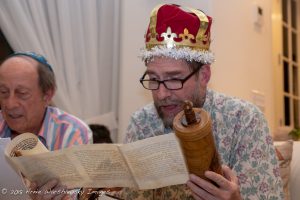
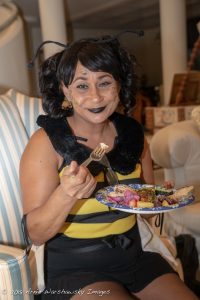

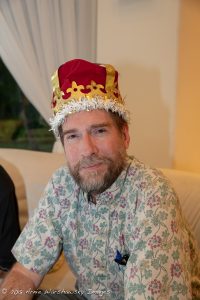
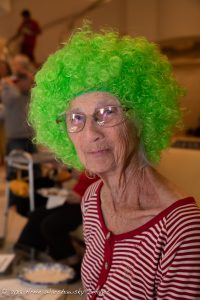
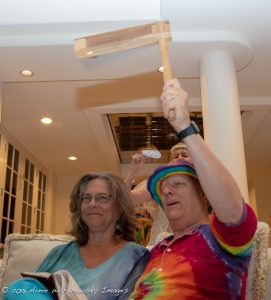
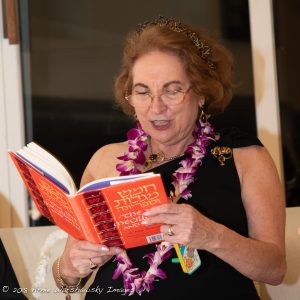
The Book of Esther
Mar 6, 2019
By Robert J. Littman
The Book of Esther has been called one of the strange books of the Bible. There is no reference to God in the entire book. The story is one of the few books of the Bible set outside of Israel. It reads like a folk story and has nothing very Jewish about it. It was written probably in the second century BCE, and purports to tell the story of Esther and Ahasueros, the King of Persia.
Ahasueros (Hebrew for the Greek King Xerxes) ruled from 486 BCE to 465 BCE. We have a great deal of information about his reign from the Greek historian Herodotus, who was a contemporary, as well as from inscriptional evidence from Persia. He was married to Amestris, a Persian noble woman, and never had a wife called Esther or Hadassah.
Even the names in the story are fanciful. Esther is the Aramaic rendering of the Babylonian name Ishtar, the Goddess of sexual love, and sometimes war. Readers of the book have long puzzled about the two names of Esther, Esther and Hadassah. In fact, the goddess Ishtar was called Ishtar Hadasha, “Ishtar the Bride.” Readers and Biblical commentators have misunderstood Hadassah to derive from hadasa, “myrtle.” Mordecai again is a Babylonian name which means “Follower of Marduk.” Marduk was the Babylonian god of war, and is associated with Ishtar in the Babylonian.
Even rabbinic Judaism tried to reject the Book of Esther and not include it in the canon of accepted books of the Bible. But its popularity among common people, and the popularity of Purim kept the book alive. It is a good yarn that describes how a Jewish folk heroine helps her people survive, and triumph. It does not matter that this was originally a Persian or Babylonian story and festival that has been usurped. This Purim, let us write the name of Haman on the bottom of our shoes and stamp out his name, along with all those who would oppress the Jewish people.
Hanukkah In Egypt
Jan 31, 2019
By Robert Littman
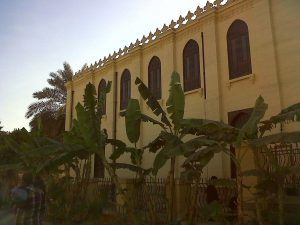
Jews have lived in Egypt in great numbers since the 3rd century BC. In the aftermath of the 1948 Israeli War of Independence and the Suez crisis in 1956, most of Egypt’s Jews left. Today less than 20 Jews, all elderly, remain in Egypt. The 9th century Ben Ezra Synagogue, the synagogue of Moses Maimonides, famous for the Cairo Geniza, remains as a museum. During the winter of 2012, I was excavating at my site of Tell Timai in the Nile Delta. Tell Timai is the site of the ancient city of Thmouis, where there was a considerable Jewish population in the first century BCE and CE. When the Maccabean revolt broke out, the King of the Seleucids, Antiochus Epiphanes, was near Thmouis, in an expedition to defeat the Ptolemaic empire. The revolt caused him to leave Egypt and return to the Levant. In our excavation team were Jay Silverstein, a member of Sof Ma’arav, and several Jewish students. It is the tradition at Hanukkah to light the Hanukkiah and place it in a window so the candles can be seen. We decided that it would be more politic not to display the lights in a country that had expelled all its Jews and demonstrated anti-Israel and anti-Semitic attitudes, despite the peace treaty with Israel. The first night, Jay and I, and several students gathered in my rooms in the basement of our dig house in the village of Timai El Amdid to light the candle for the first night. The other non-Jewish students and staff heard what we were doing and by the fourth and fifth night, most of our students and staff, 12-13 of us, including non-Jews, gathered in my rooms, with the drapes closed, to light the candles and celebrate the holiday with us. We felt a bit like the Marranos of Spain, hiding our Judaism.
That season was not the only Egypt-Israel connection. Jay was excavating in a Roman layer, about three meters deep, and found what he thought was a bronze metal-working workshop. After he cleaned the bronze, he discovered that the bronzes were in fact unexploded ordinance, live bullet shells. We doubted that the Romans had bronze bullets, and we later found that during the 1967 war between Egypt and Israel, there was a gun emplacement on the Tell, which shot down an Israeli plane. After the war, the gun emplacement was removed, and the area reburied – but live ammunition remained for us to discover.
The ancient synagogue that surely was at Thmouis remains to be discovered.
